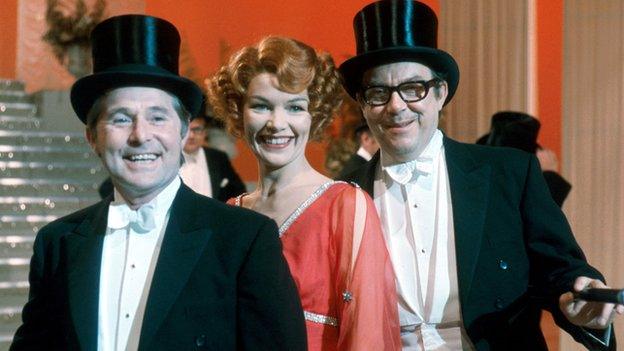Winston Churchill's Oxfordshire's connections
- Published
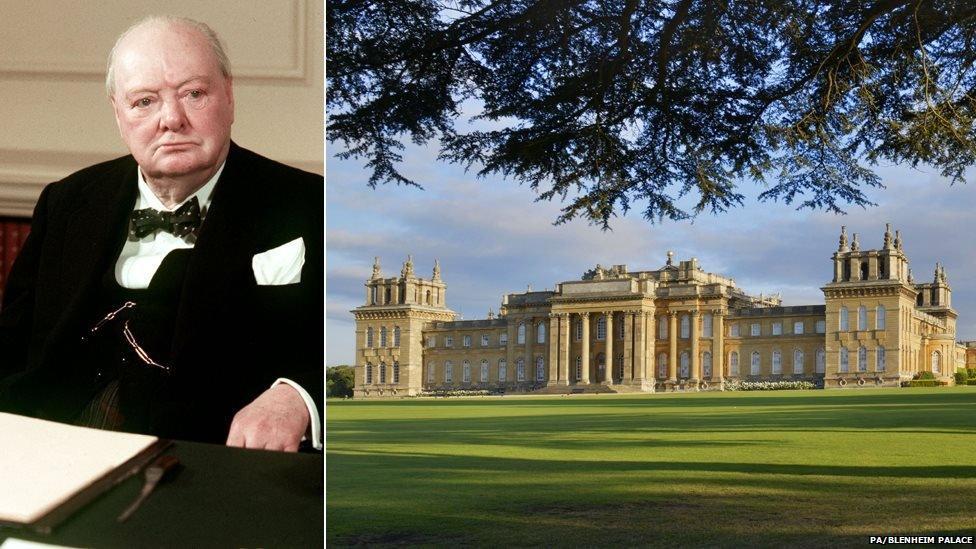
Throughout one of the most colourful and distinguished careers in British politics, Winston Churchill - who died 50 years ago - retained an affinity with Oxfordshire - the county of his birth.
Winston Leonard Spencer Churchill was born on 30 November 1874 while his aristocratic parents were on a visit to the family ancestral home, Blenheim Palace, in Woodstock.
His cousin Shane Lesley wrote that it was a St Andrew's Day ball that brought on labour pains. However Churchill's father, Lord Randolph Churchill, wrote the birth had been brought on by a "rough and imprudent" horse ride and subsequent fall.
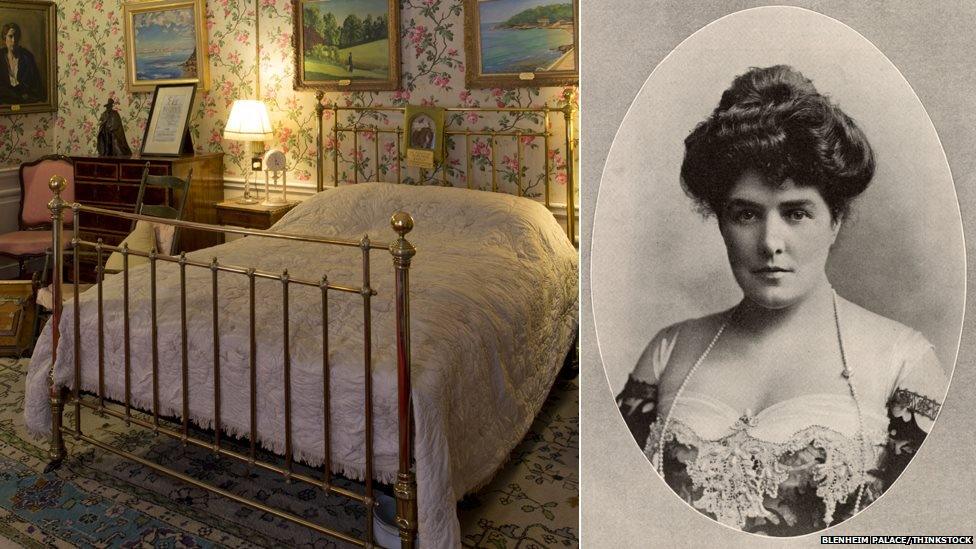
The bedroom in which Lady Randolph Churchill gave birth is open to visitors to Blenheim Palace
As a boy Churchill rode his pony Rob Roy in the grounds, and the house still has the toy lead soldiers he played with.
A landmark moment in his life was when he proposed to Clementine Hozier at Blenheim in 1908.
Blenheim's head of education, Karen Wiseman, said the story went that they had arranged to meet in the Great Hall. However, he slept in and an angry Clementine was taken for a carriage ride by his father.
"A servant was dispatched to wake Winston and the pair duly went on their walk in the rose garden but it started to rain, forcing them into the Temple of Diana where a nervous Winston finally proposed."
The couple wed later the same year, beginning 56 years of marriage.
Churchill remained a frequent visitor to Blenheim, fishing, riding and painting scenes around the spectacular grounds.
"This was the home of his family. He famously said he made two very important decisions at Blenheim - to be born and to marry there - and he was content with both," said Ms Wiseman.
The house is marking the 50th anniversary of his death with a relaunched Churchill Exhibition, external and series of memorial walks.
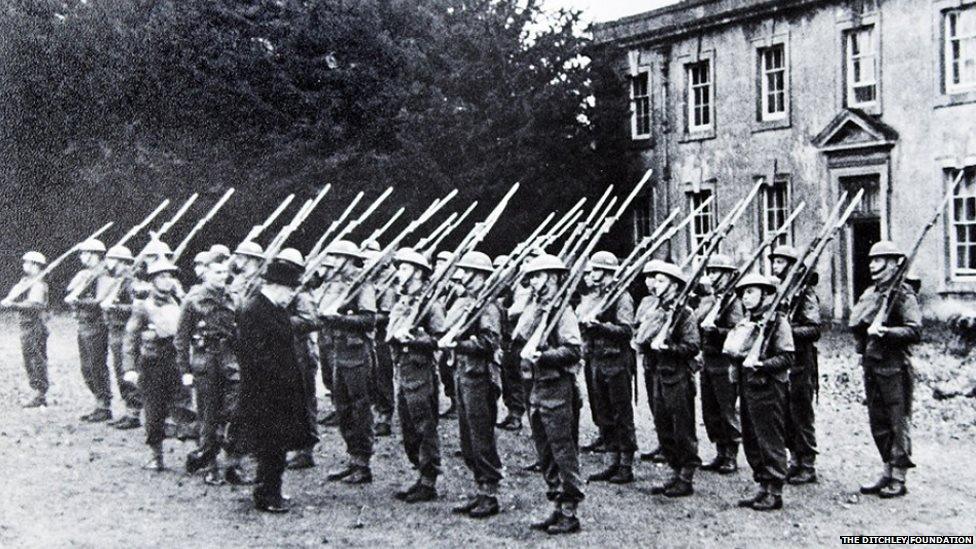
Churchill was guarded by soldiers from the Oxfordshire and Buckinghamshire Light Infantry while he stayed at Ditchley
When Churchill left the regular army to go into politics in 1900, he joined a local territorial regiment, The Queen's Own Oxfordshire Hussars, as commander of the Henley Division.
He actively served with them and briefly saw action on the Western Front in World War One. He remained their honorary colonel until his death.
During World War Two, there were fears for Churchill's security at his home in Chartwell in Kent and the prime minister's official country retreat of Chequers. Blenheim would also have been an easy target for German bombers.
Instead he was offered the use of Ditchley, external, the home of Conservative MP Ronald Tree where heavier tree coverage made it a more secure weekend retreat for the wartime leader.
As well as members of the war cabinet, US dignitaries and the president of Czechoslovakia were entertained at the 290-acre estate near Charlbury.

Churchill, pictured at Ditchley, with a machine gun tripod behind him

Winston Leonard Spencer Churchill, 1874-1965
Born 30 November 1874 at Blenheim Palace in Oxfordshire. Attended Harrow and Sandhurst before embarking on Army career, seeing action in India, and Sudan
Became a Conservative MP in 1900, but in 1904 joined the Liberal Party. He was a cabinet member from 1908 and First Lord of the Admiralty from 1911 until the disastrous Dardanelles expedition in early years of WW1. He served on the Western Front for a time, before rejoining government from 1917-1929
Opposition to Indian self-rule, warnings about the rise of the Nazis and support for Edward VIII left Churchill politically isolated during 1930s. After WW2 broke out, he replaced Neville Chamberlain as prime minister, when his reputation as an inspirational wartime leader was cemented
He lost the 1945 General Election but was returned to power in 1951 and continued as prime minister until 1955. He died on 24 January 1965 and was given a state funeral

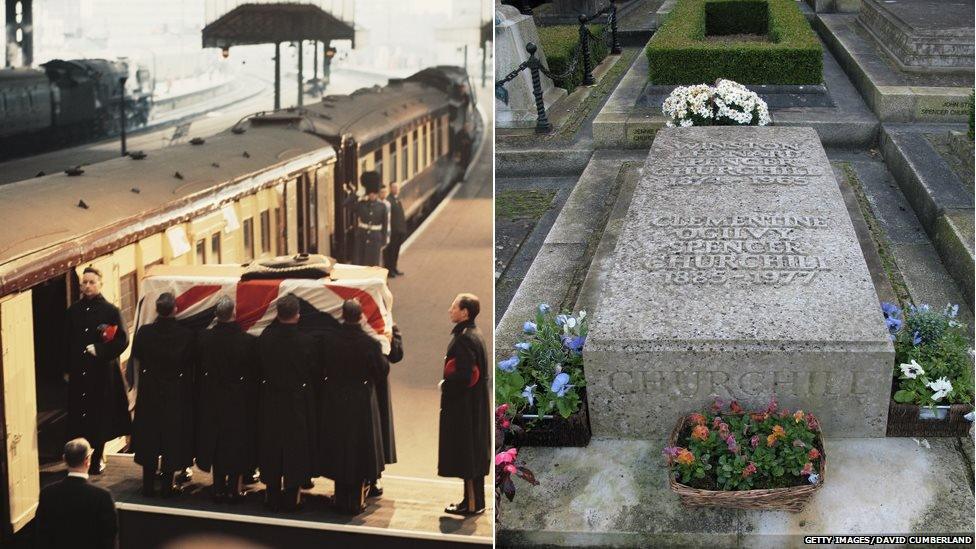
Sir Winston Churchill is buried in his family plot at St Martin's Church in Bladon
A sign of Churchill's affinity with the county of his birth was his decision to be buried in his family plot at St Martin's Church at Bladon, a short distance from Blenheim Palace.
Frank Hall, now 91, was the verger in 1965. On hearing news of the former prime minister's death on 24 January it was his task to toll the church bell.
"All the villagers knew that Winston was going to be buried in Bladon. When he came down and stood by his mother and father's graves he always said: 'This is where I'm coming to be buried'."
Mr Hall said he remembered the cold, frosty day on 30 January when Churchill's coffin arrived after his state funeral in London for the private family burial service.
"Bladon was completely blocked, there were just thousands upon thousands of people there. The great man had gone."
Aside from the gravestone, up to now there has been no permanent tribute to Churchill at the church.
Earlier this year a stained glass window design was unveiled. Funds are currently being raised for the window which it is hoped will be installed in May.
- Published17 December 2014
